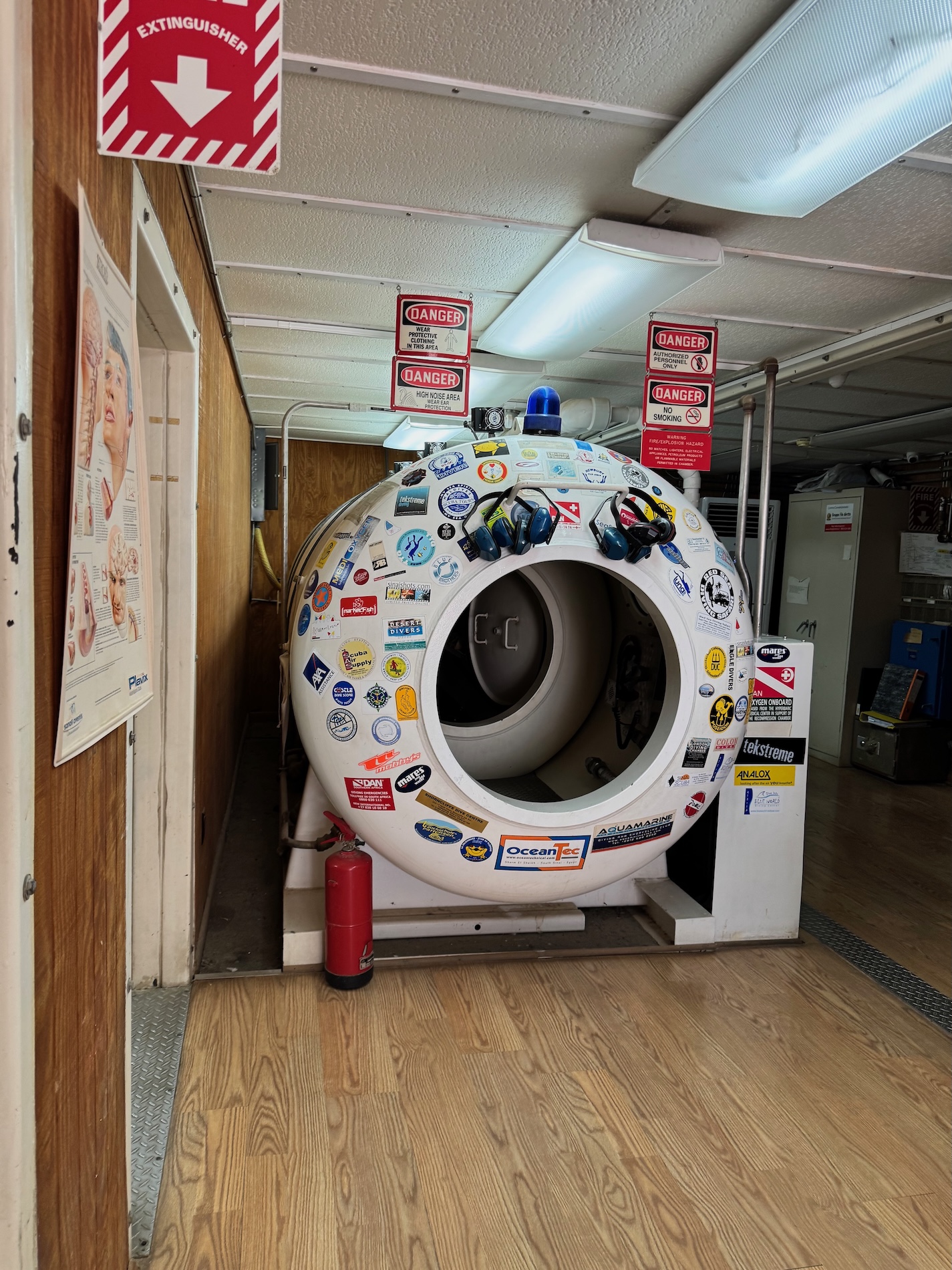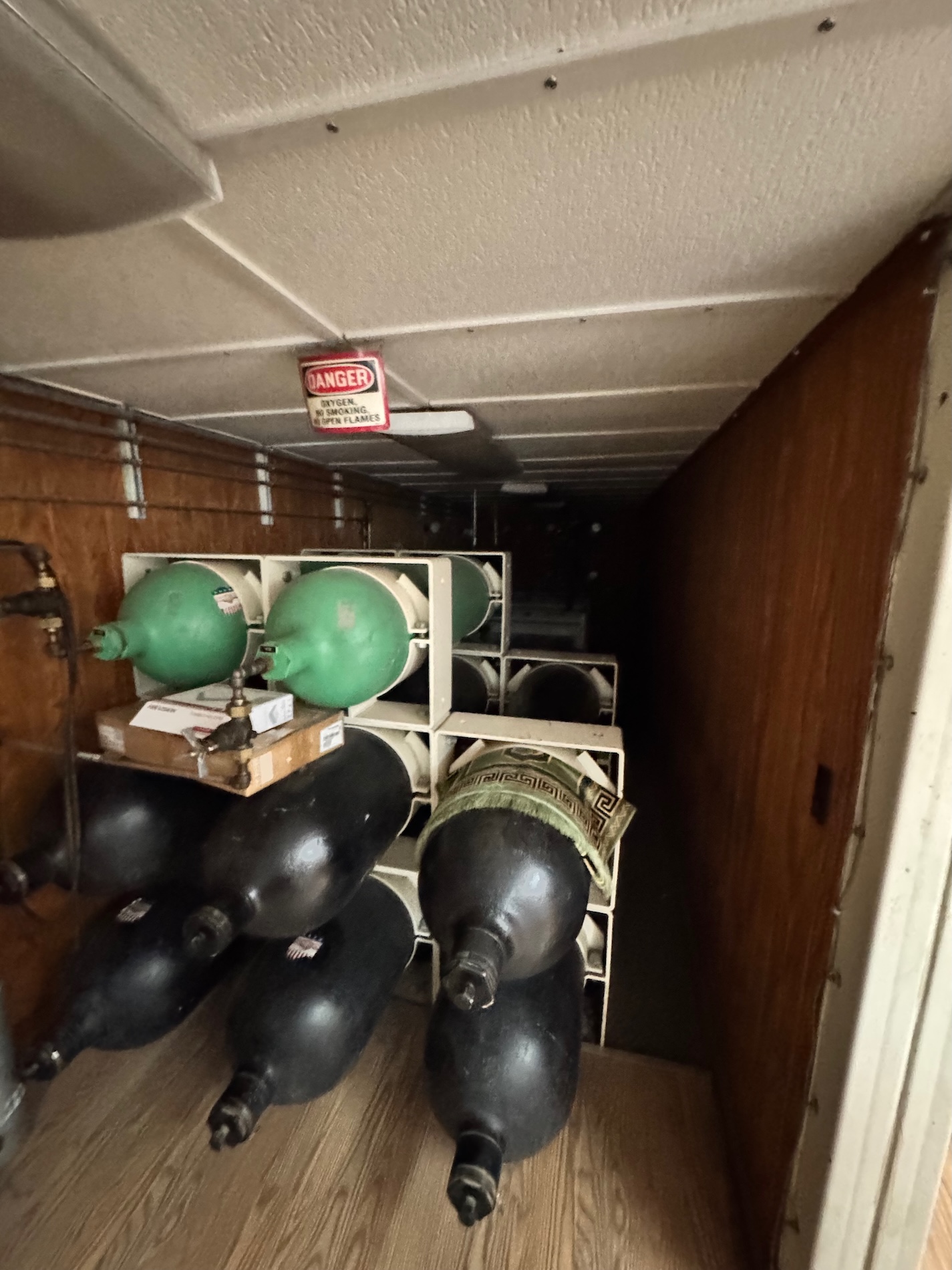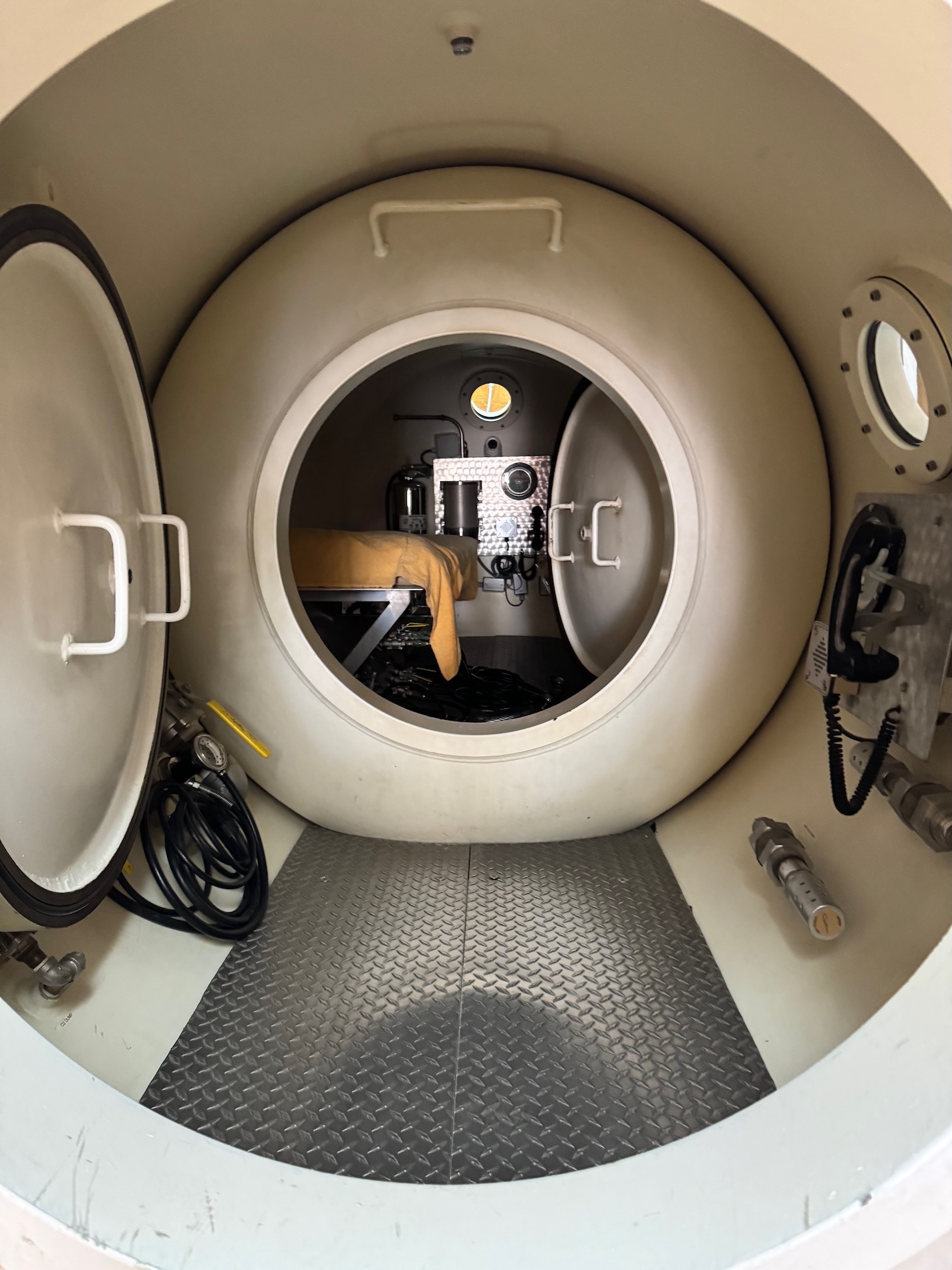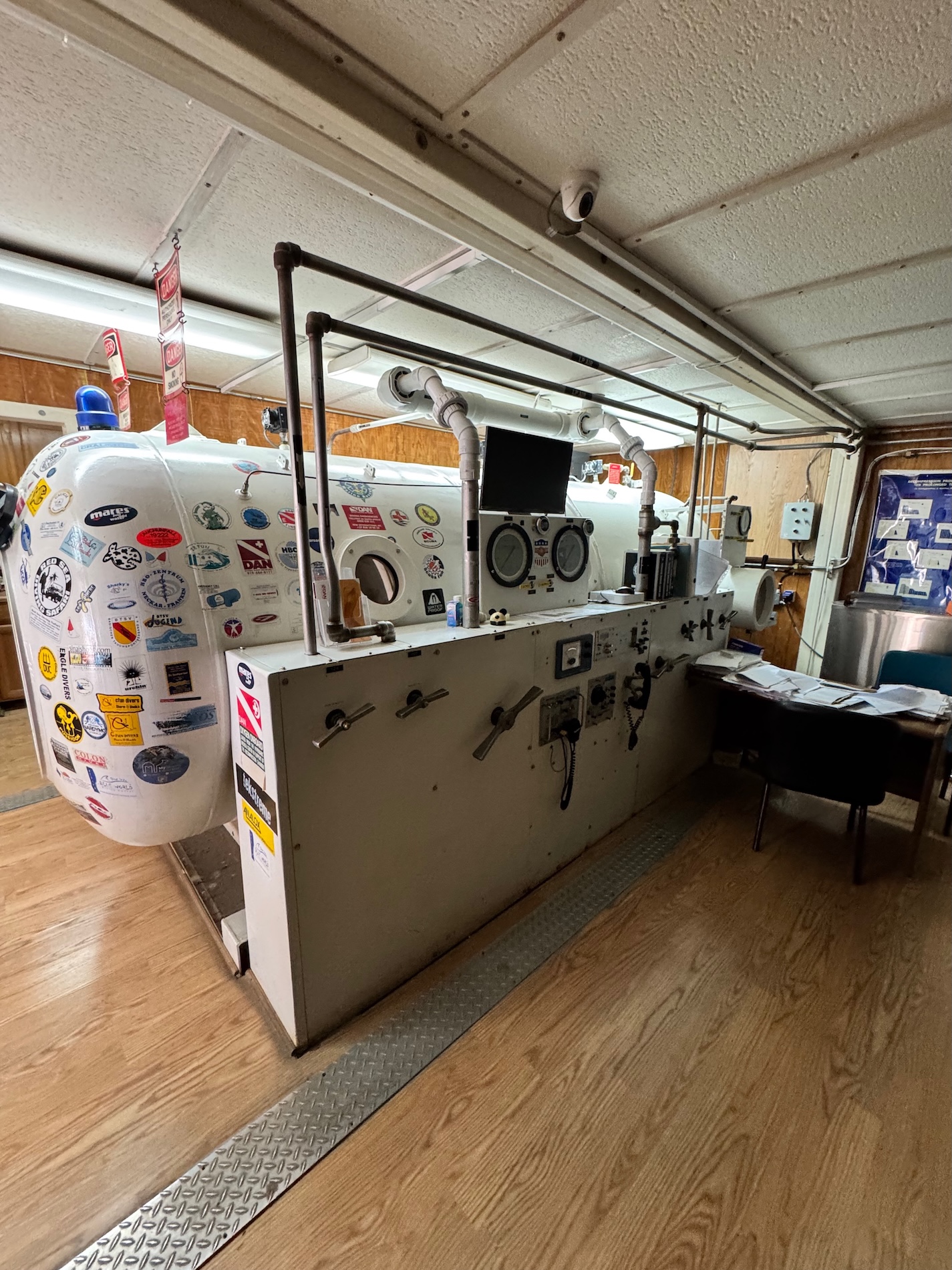Insights from Sharm Hyperbaric Chamber (SHC)
During our first visit to the Sharm Hyperbaric Chamber, we sat down with Dr. Adel to discuss a range of freediving-related questions. Below are his responses. Since then, we’ve already returned for a second visit and are planning a third to address the remaining open points.
Aruna and I are also considering taking the SHC Tender Course to deepen our understanding of hyperbaric treatments and to be able to assist Dr. Adel and Dr. Ahmed in emergencies. In addition, we’re looking into doing an Oxygen Decompression course—either through IANTD or directly with Dr. Adel (his non-certification version goes much deeper into the material).
1. Wet Recompression – Is it an option?
Dr. Adel: No, not an option. He has developed deco tables (9 m for 1 hour, or 90 minutes if symptoms persist; followed by 6 m for 1 hour; then surface O₂ for 3 hours). In case of convulsions, do not resurface—the lack of breathing during convulsions creates a high risk of lung over-expansion. While Dr. Adel has prepared detailed lectures and tables, he stresses that wet recompression is extremely difficult and requires a large, highly trained team.
2. Persistence of microbubbles
How long do microbubbles remain in the body after deep freedives? If a freediver had DCS a year ago without chamber treatment but shows no symptoms now, can we assume the microbubbles are gone?
Dr. Adel: Microbubbles dissipate within 14–18 hours. However, even if the bubbles are gone, inflammation may remain, which increases the risk of DCS recurrence. He also questions why no treatment was done—sometimes underlying health issues may prevent chamber therapy.
3. Returning to training after DCS
What is the safe timeframe or criteria to resume training after a DCS incident, especially in regions where medical expertise in diving medicine is scarce?
Dr. Adel: Only a doctor can give clearance. In Japan, divers should consult DAN Japan for expert advice.
4. Oxygen Decompression at shallow depths
Does breathing oxygen on the boat help prevent DCS? How effective is the practice of “5 minutes at 5 m on O₂”? For athletes diving repeatedly to ~100 m, is it reasonable to use alternative decompression protocols?
Dr. Adel: He has developed specific tables (e.g., minutes at 9 m followed by minutes at 6 m). After completing his courses, I’ll be able to share more precise guidance on this.
5. Does DCS Risk increase with age?
Does age increase DCS risk? What about high blood pressure or reduced alveolar flexibility?
Dr. Adel: Yes, risk increases with age—mainly due to reduced hydration response (older divers feel less urge to drink, yet need more fluids). Hypertension is a significant risk, especially above 145, depending on its cause. Lung flexibility normally decreases very slightly with age, but COVID can cause significant reductions. Pulmonary function tests can detect this.
6. DCS Management during competitions
DCS symptoms may appear 15 minutes to several hours after a dive, making detection difficult unless the athlete self-reports. Chambers are not always nearby.
Dr. Adel: A chamber should be accessible within 4 hours, and qualified medics must be present. This mirrors AIDA’s rule of a 2-hour limit with certified medics.
7. Competition schedules and DCS risks
Many international competitions (e.g., CMAS Worlds) schedule consecutive training and competition days, which raises DCS risk.
Answer: In AIDA events, consecutive diving is avoided—competition and training days alternate with rest days. We did not need to ask Dr. Adel about this, as the policy is already established.
8. Decompression on air at 5m vs. oxygen
If pure O₂ is unavailable, is air decompression at 5 m effective?
Dr. Adel: Absolutely not. It is both ineffective and dangerous—essentially “criminal,” in his words. The cause of DCS/DCI is nitrogen from breathing air at depth, so breathing more air at 5 m only worsens tissue nitrogen load.
9. Fire extinguisher in the chamber
Why is there a fire extinguisher inside the chamber, given that O₂ + spark = explosion?
Answer: We didn’t ask this directly, as it was more of a lighthearted question. The extinguisher is useful if a fire occurs before the chamber is filled with oxygen.
More about the chamber and Dr. Adel’s work: sharmchamber.org






